
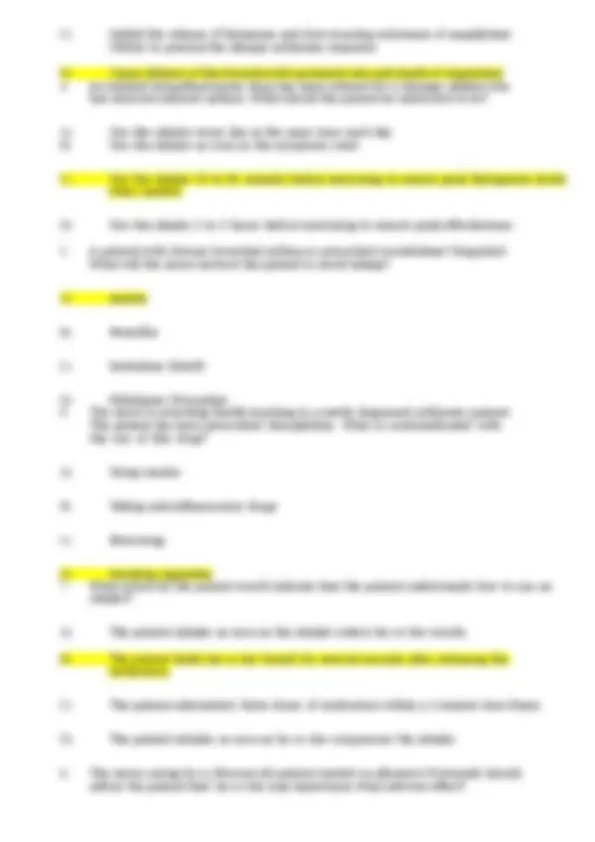
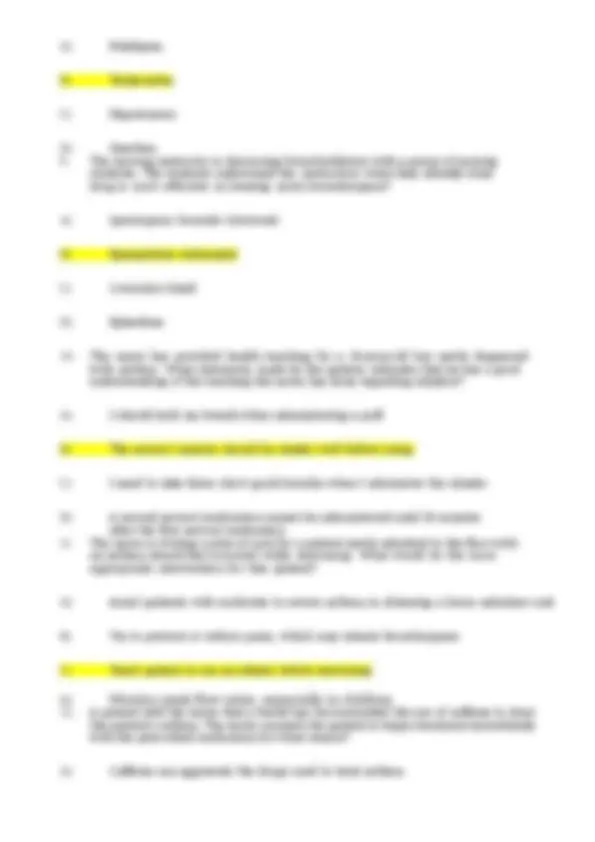
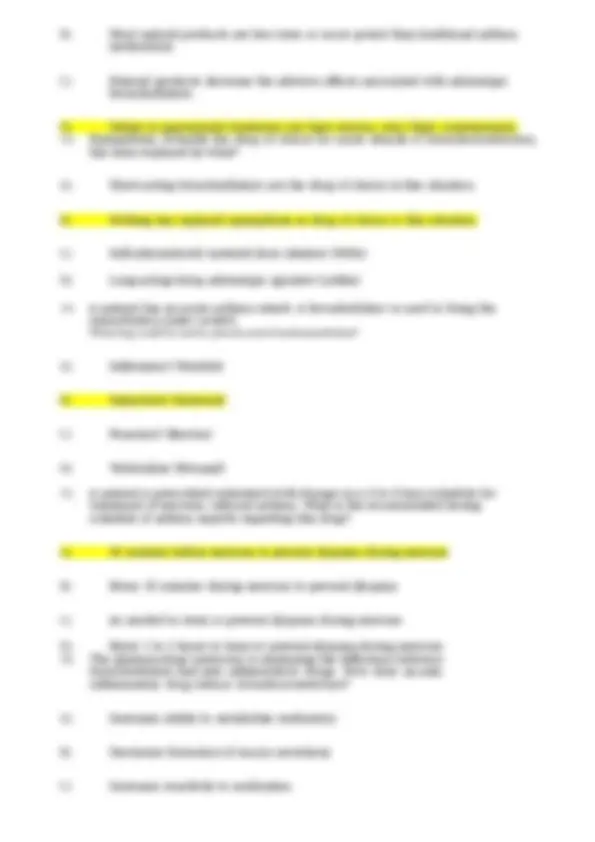
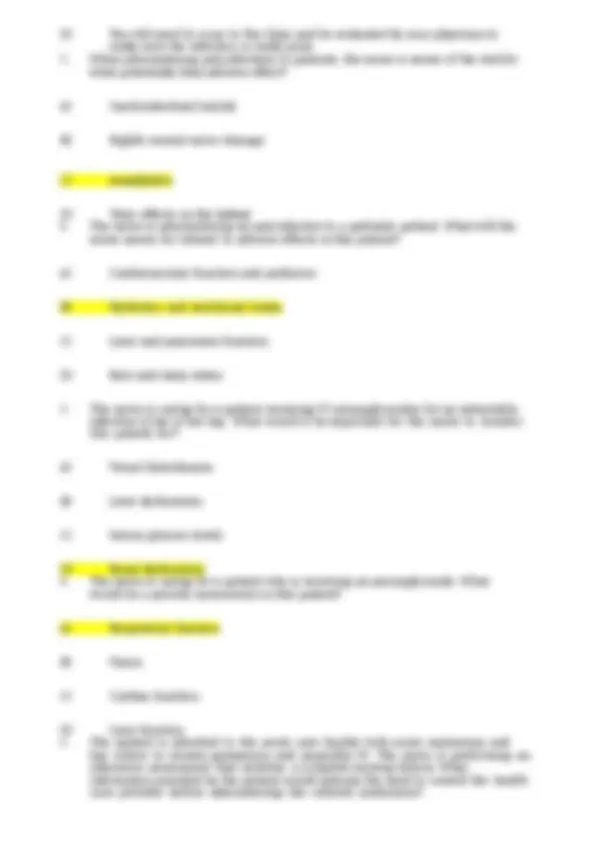
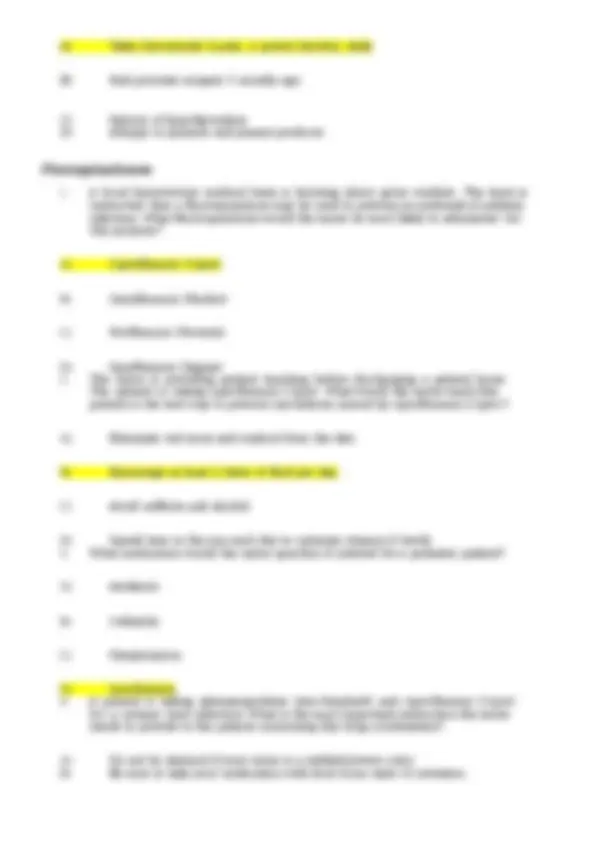
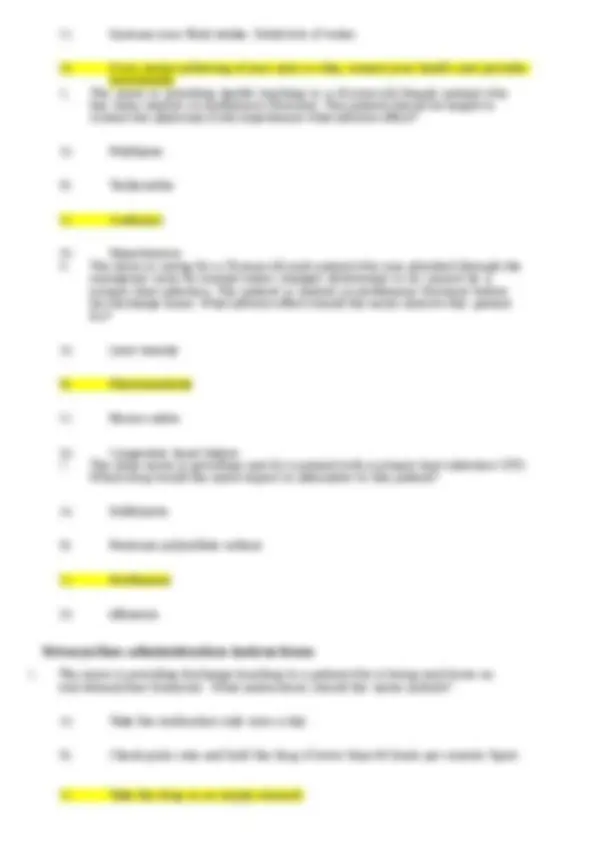
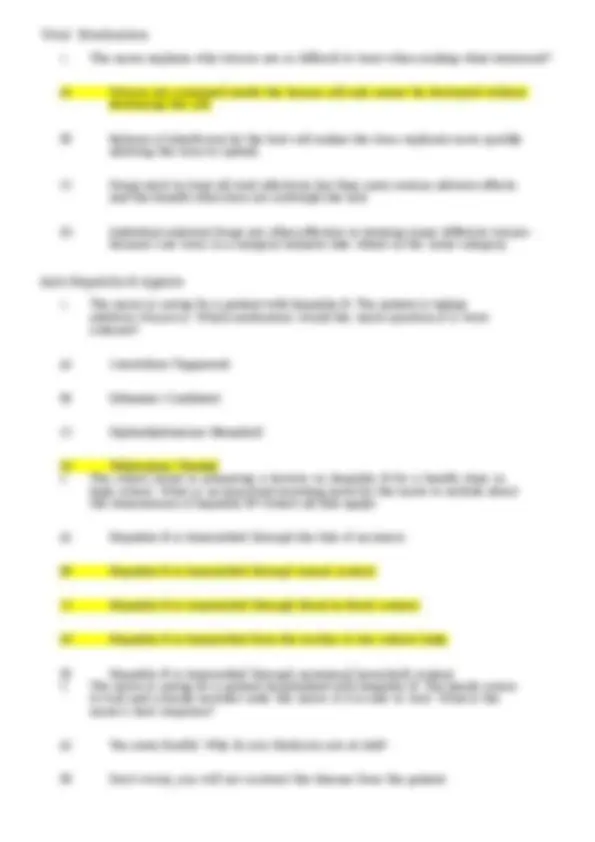
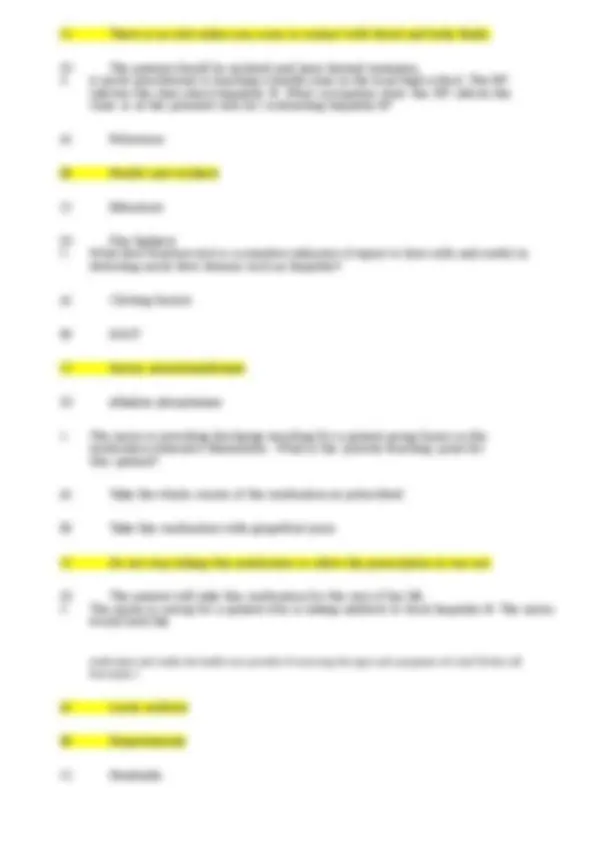
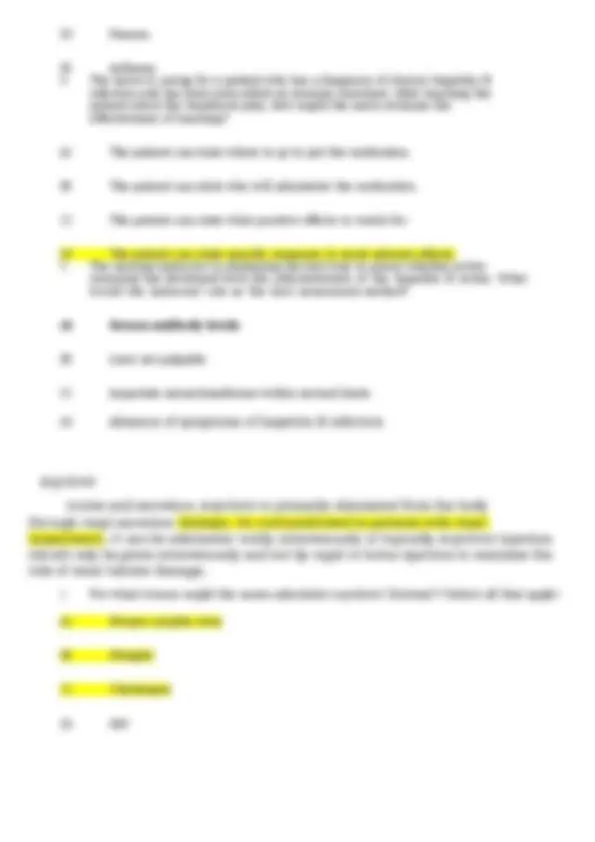
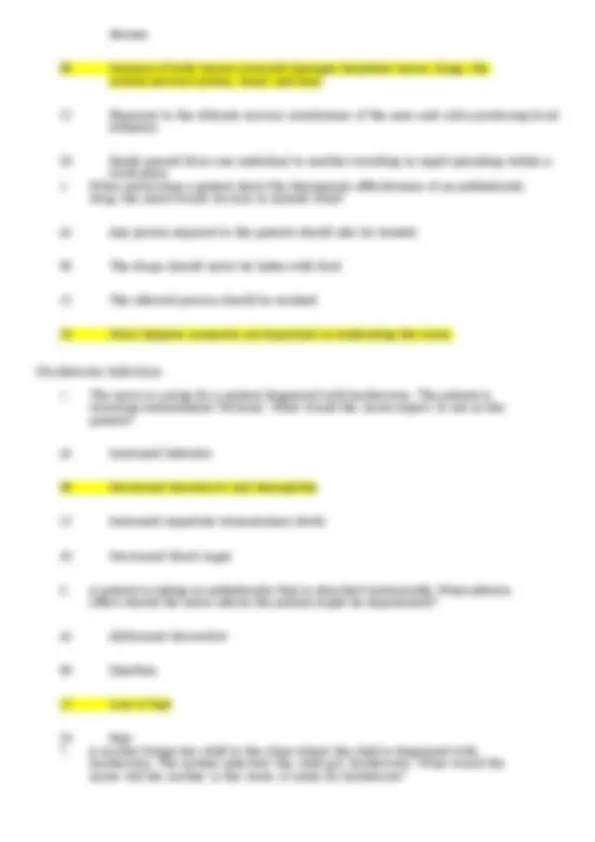
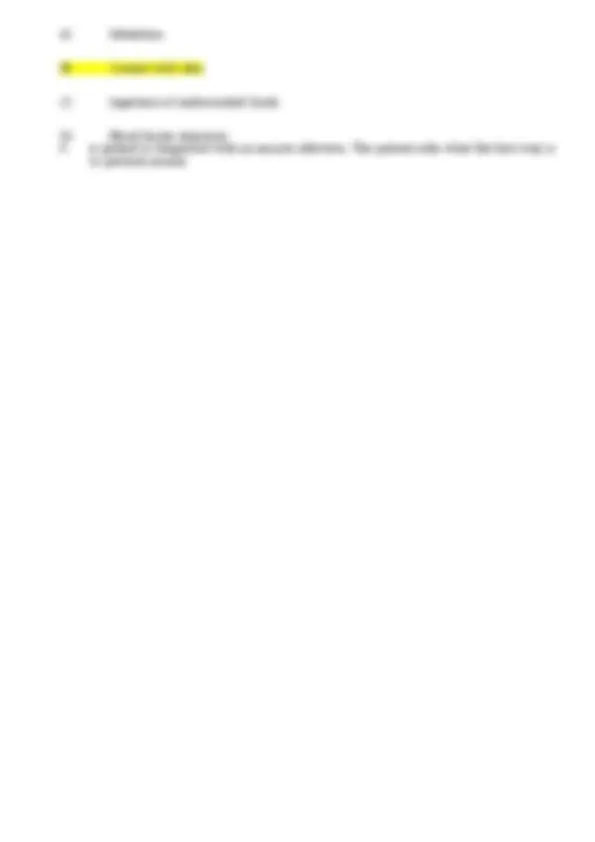
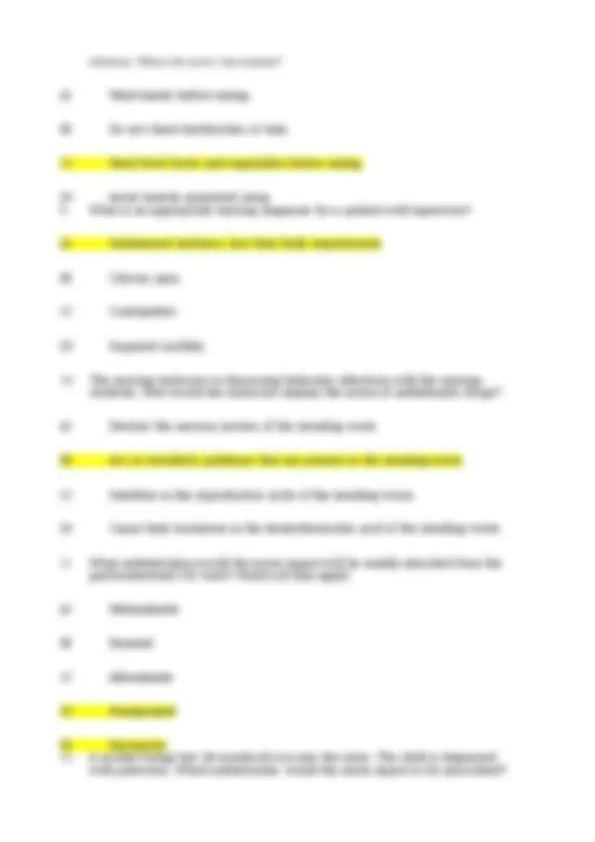
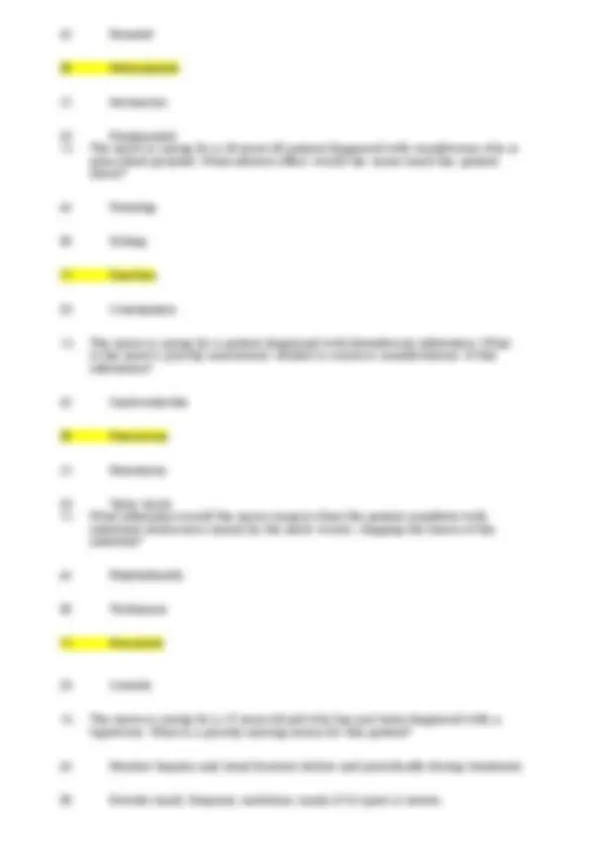
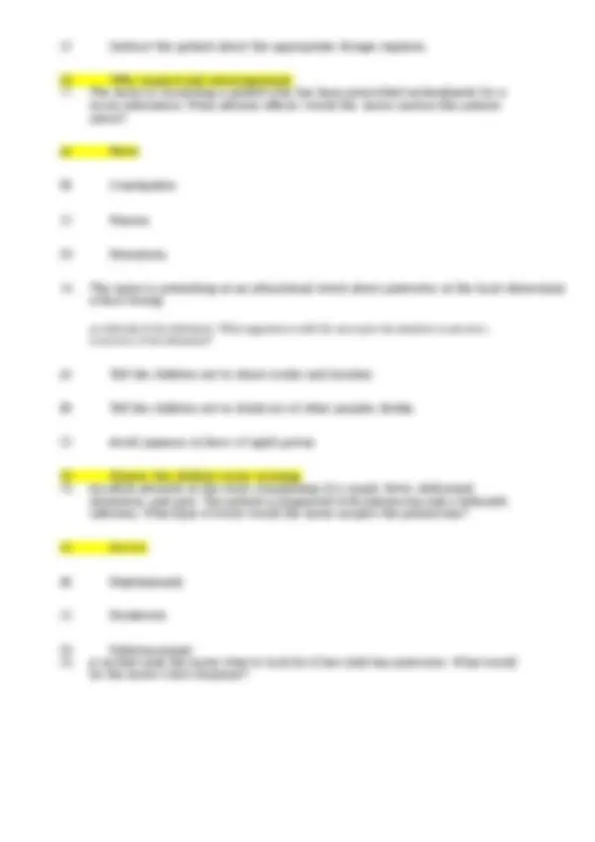
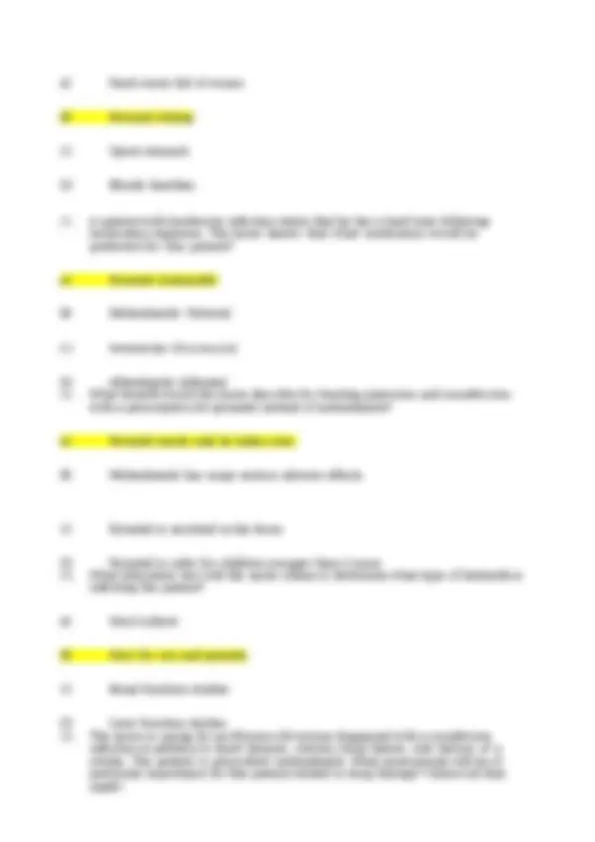
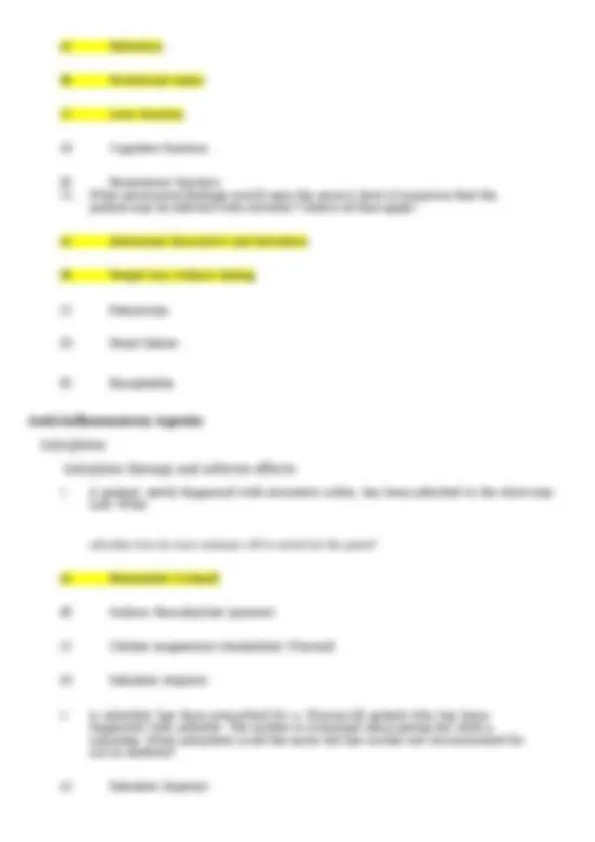
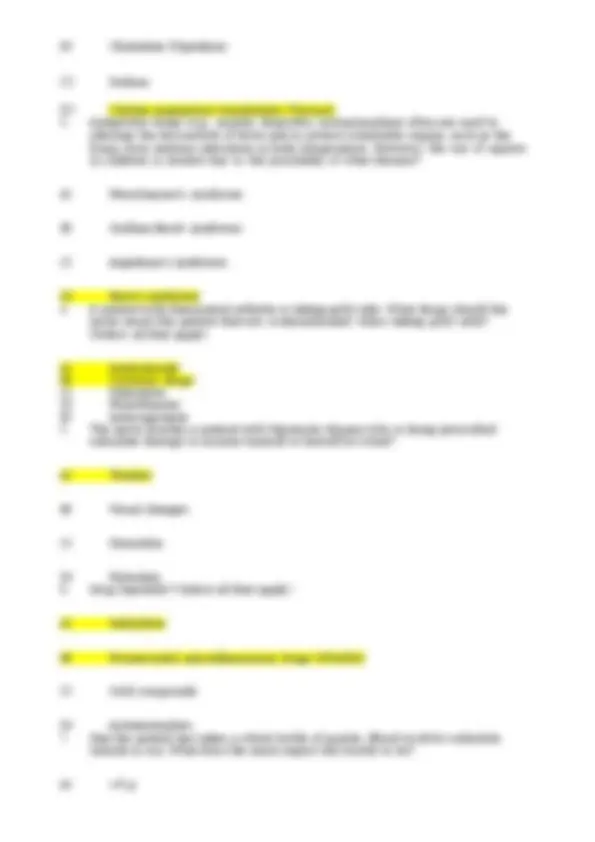
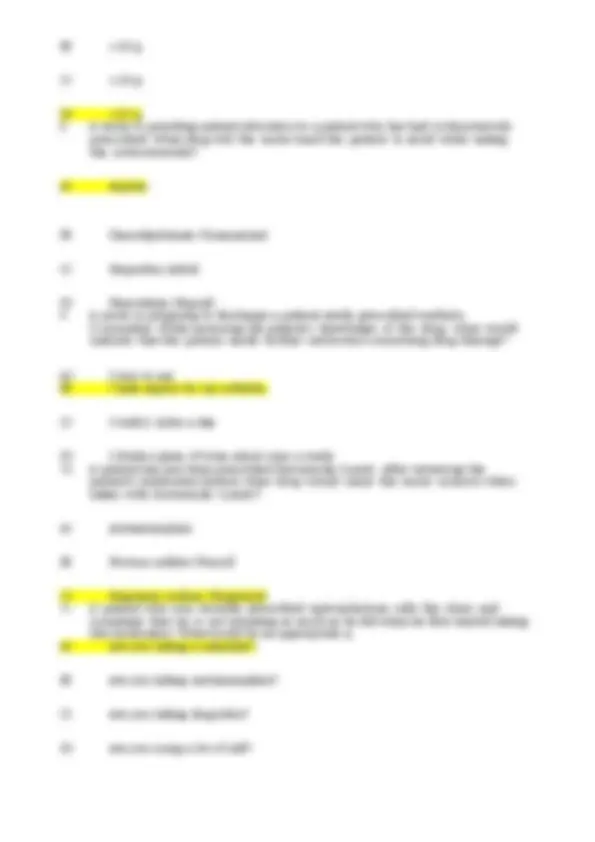
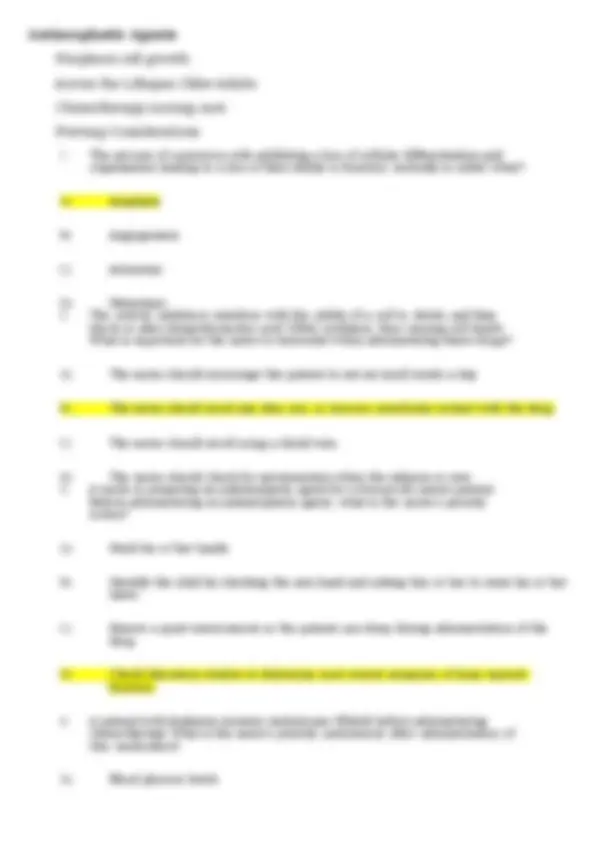
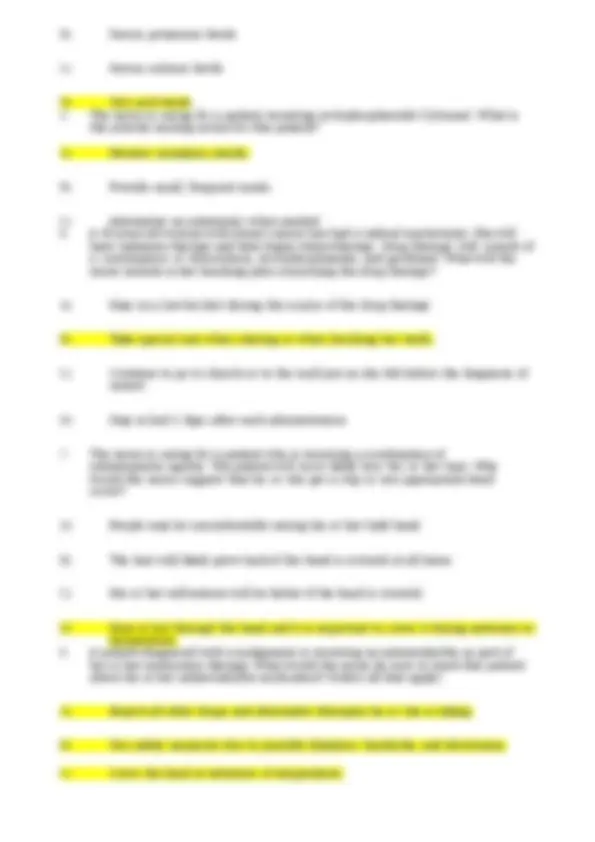
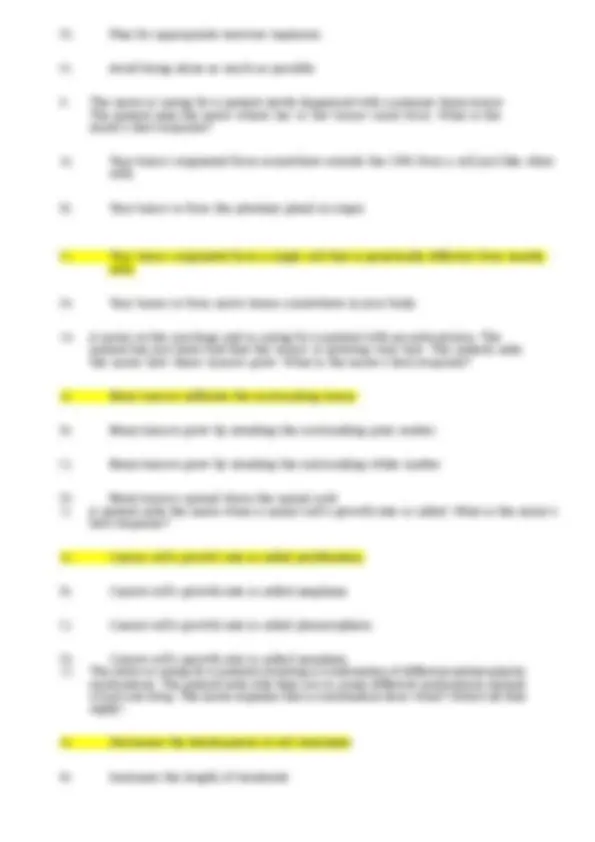
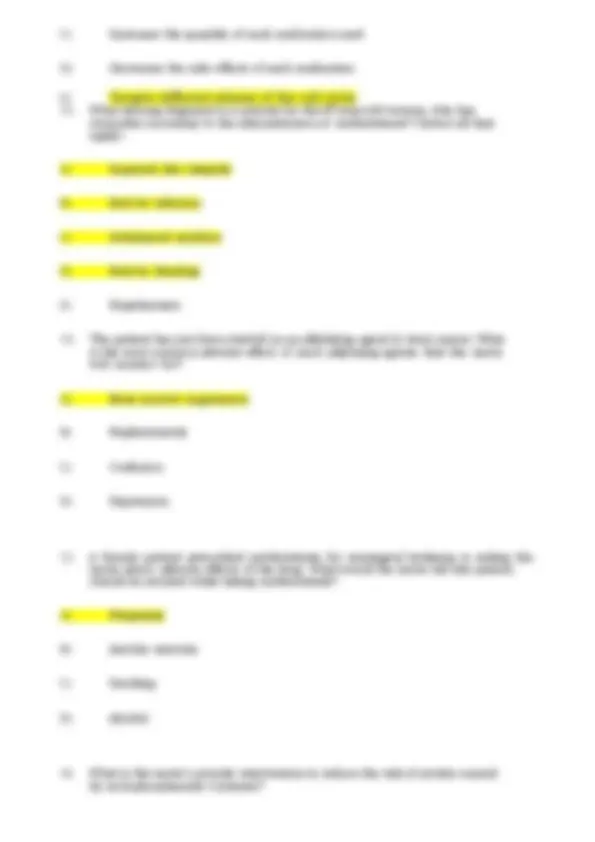
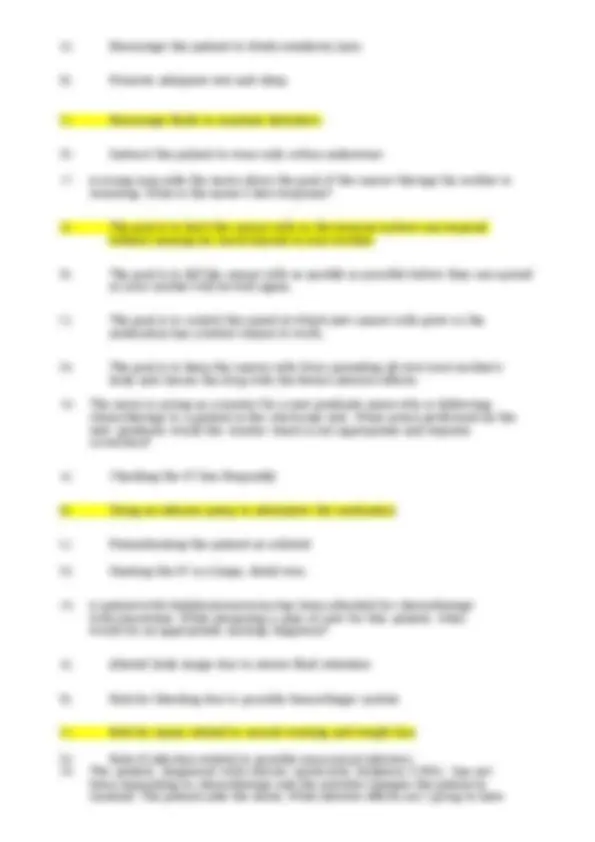
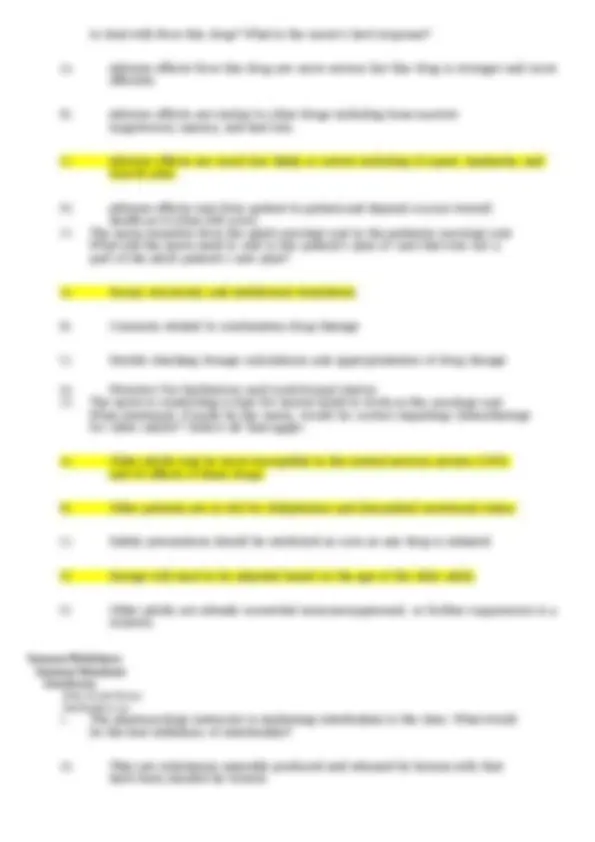
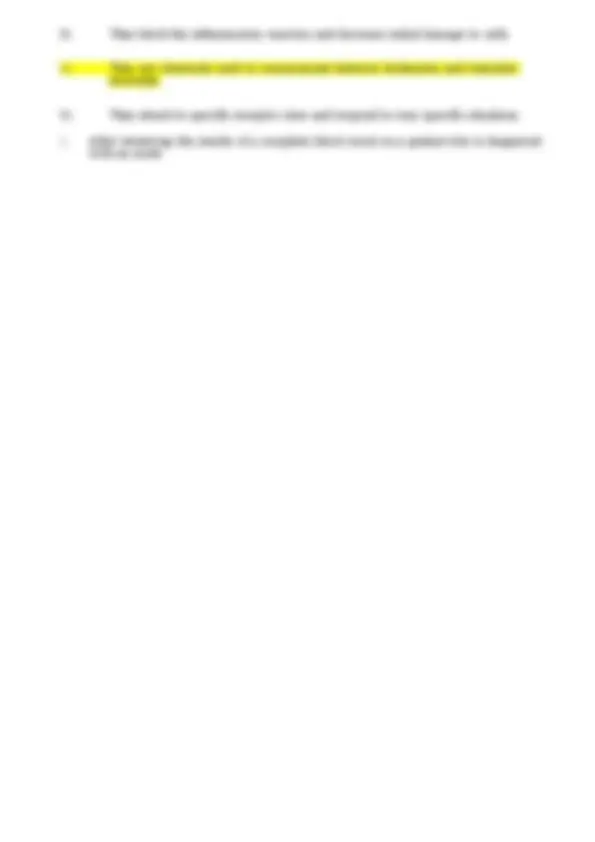
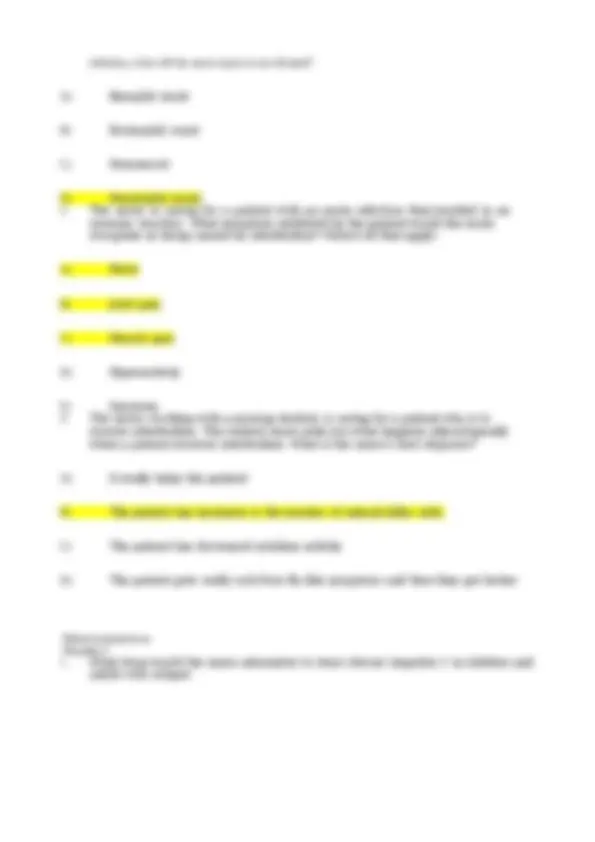
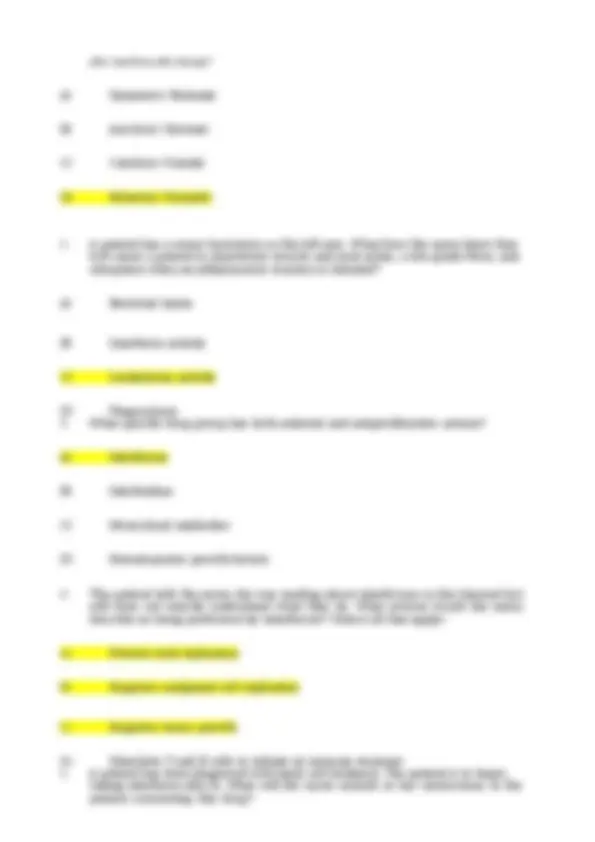
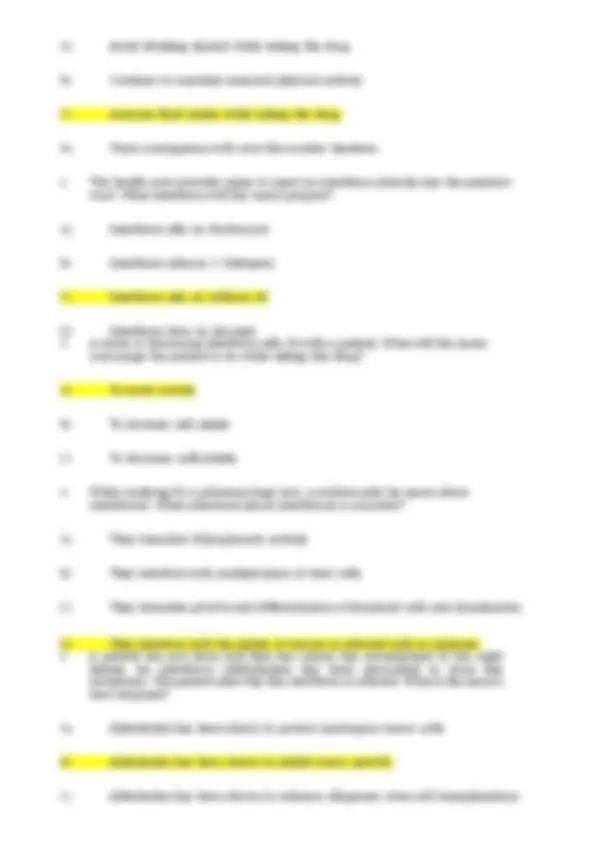
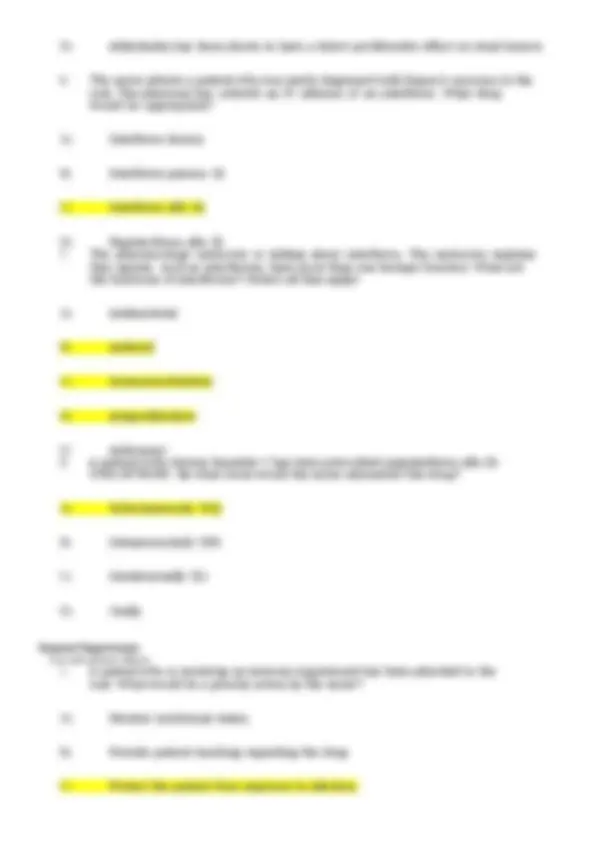
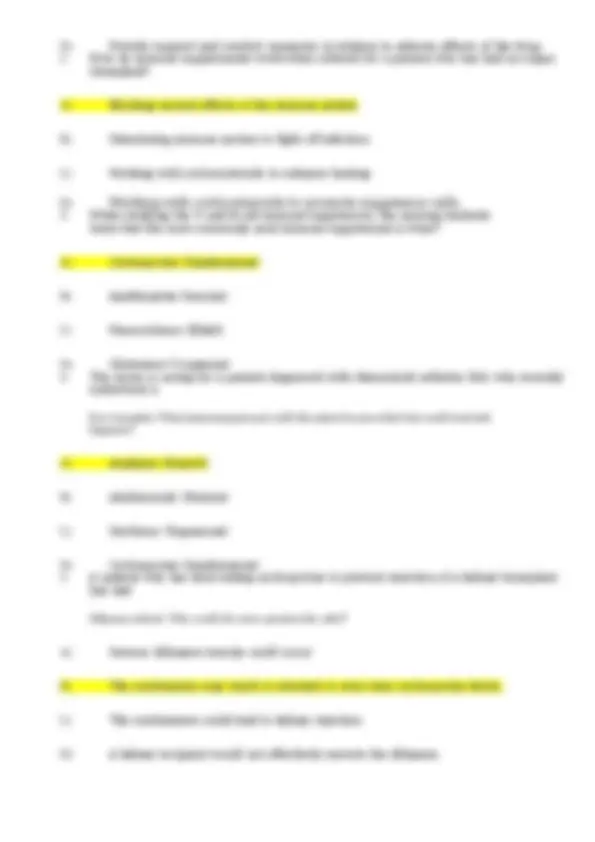
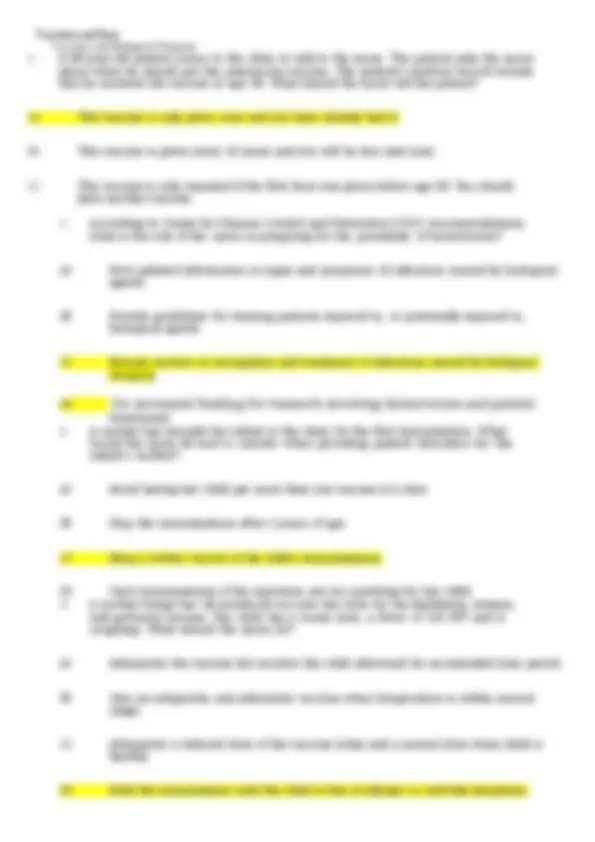
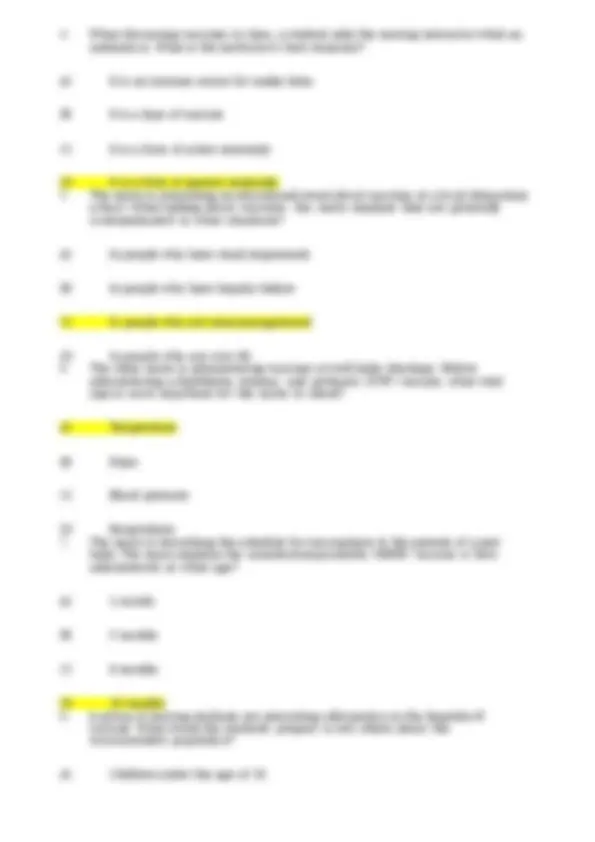
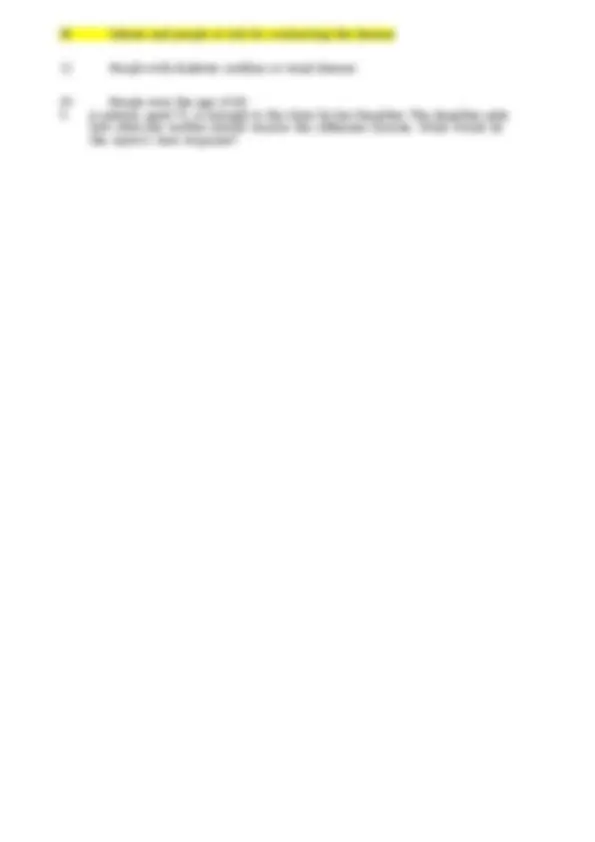
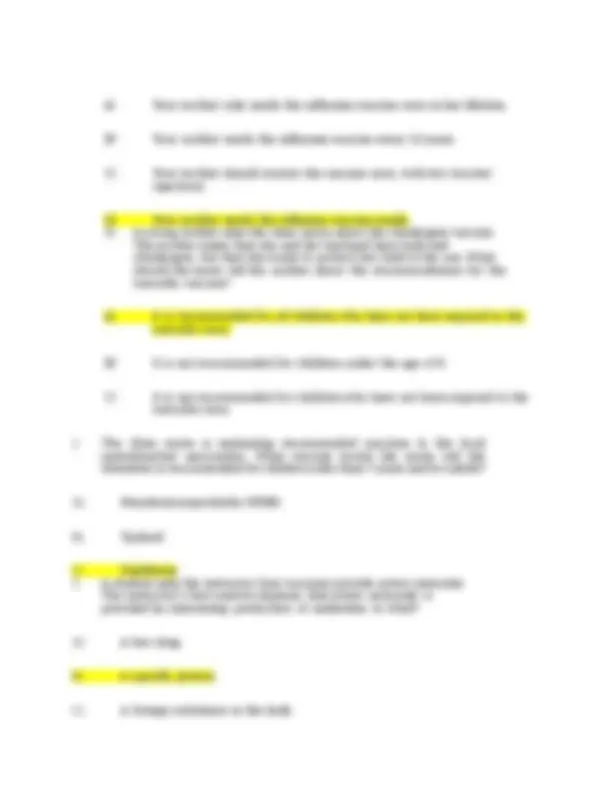
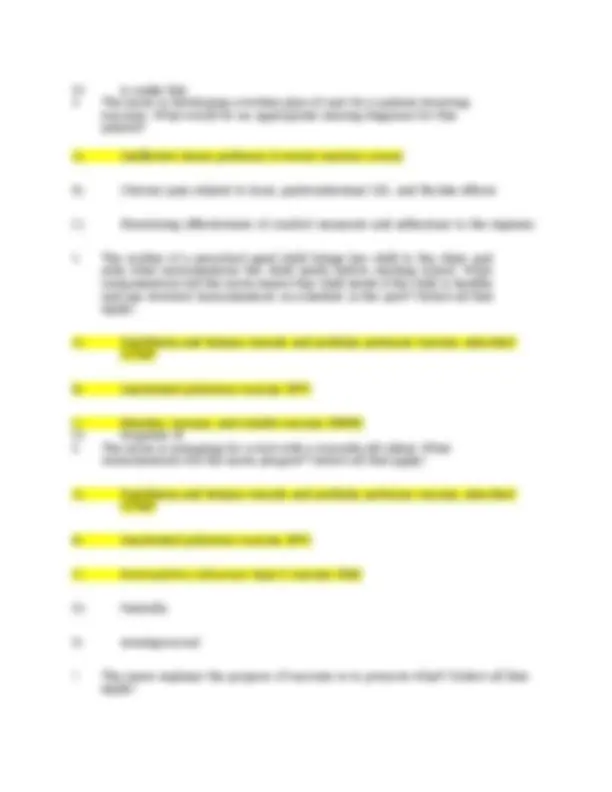
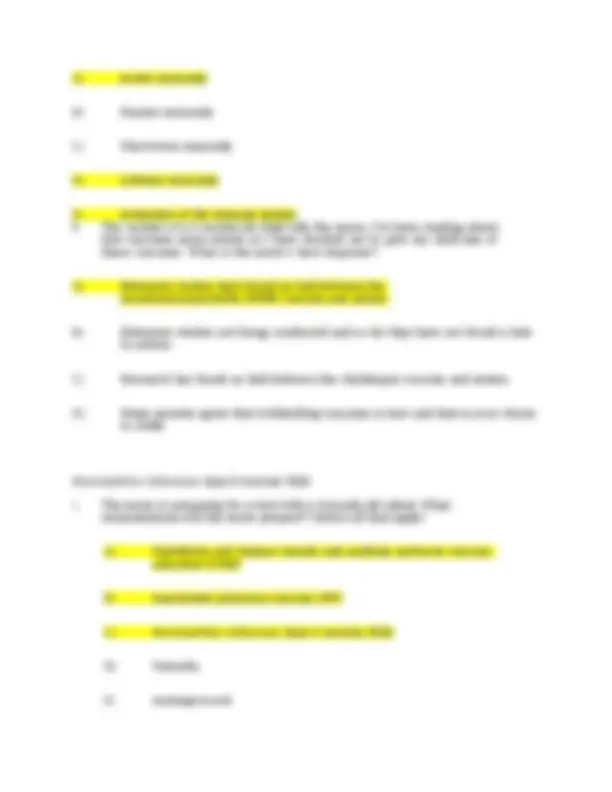
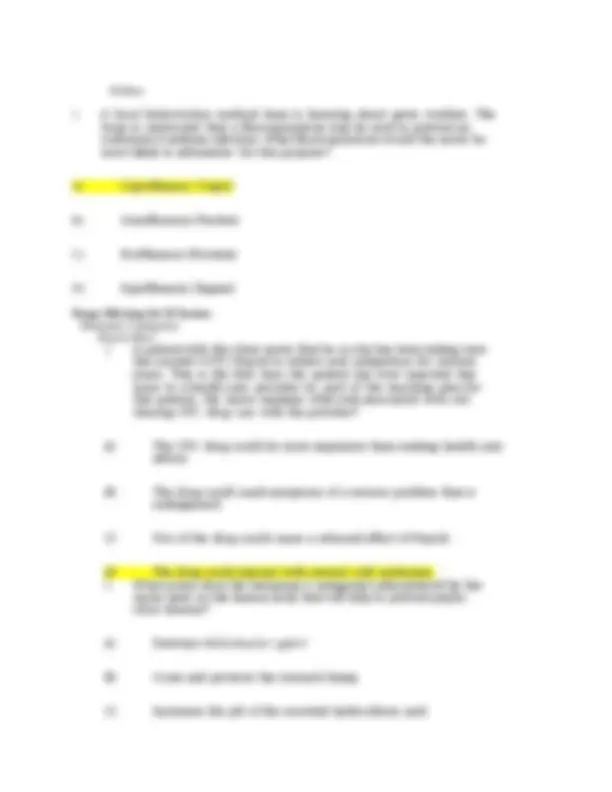
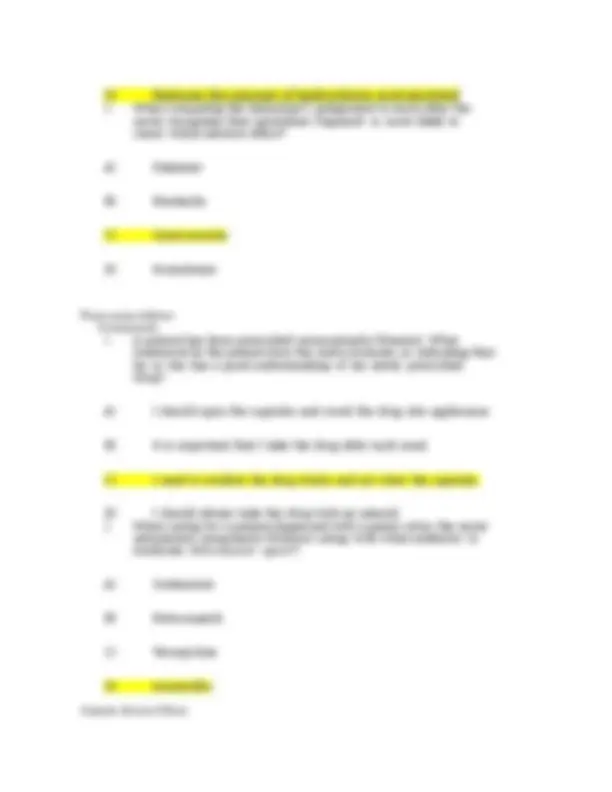
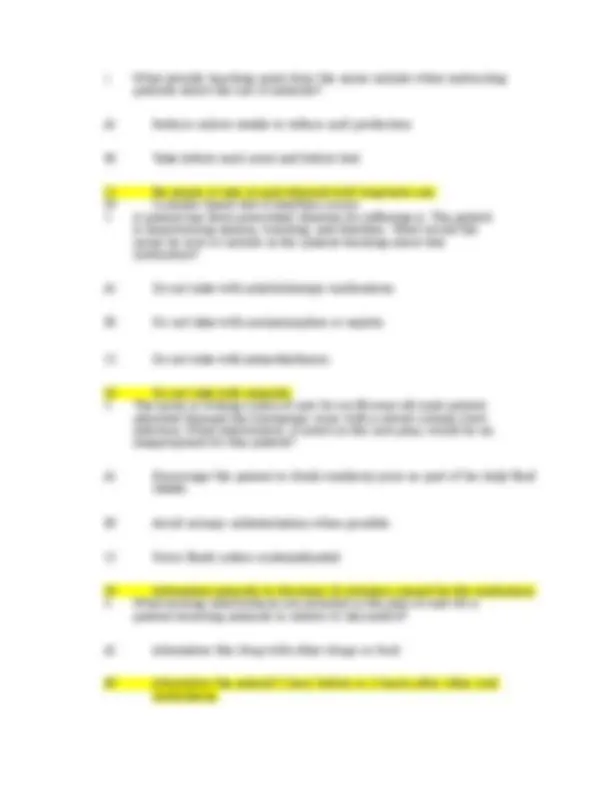
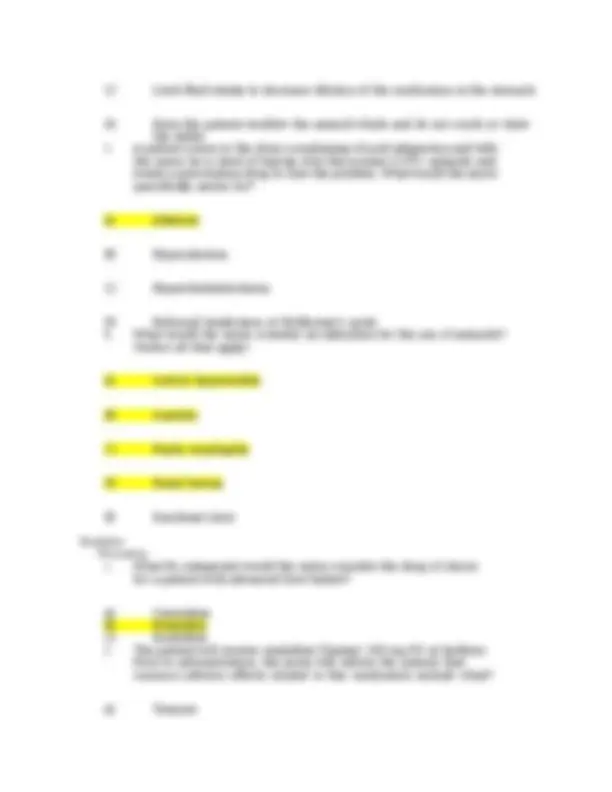
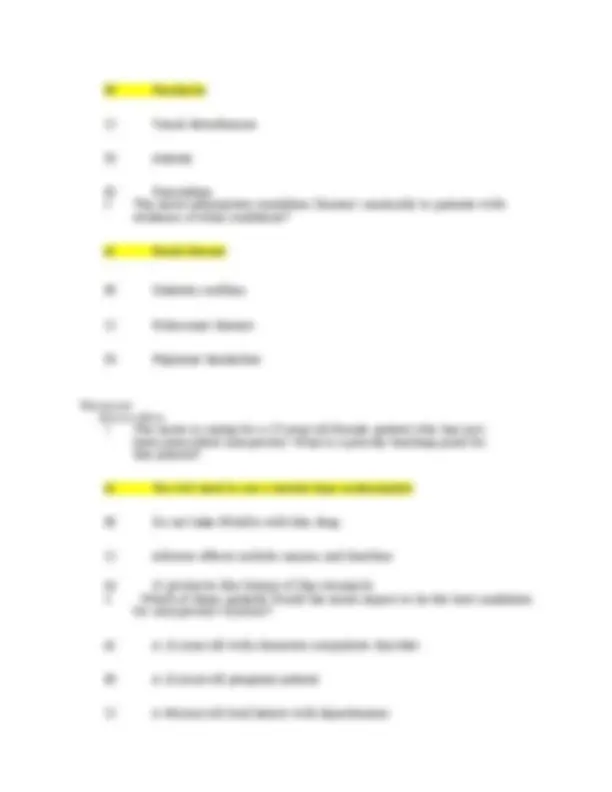
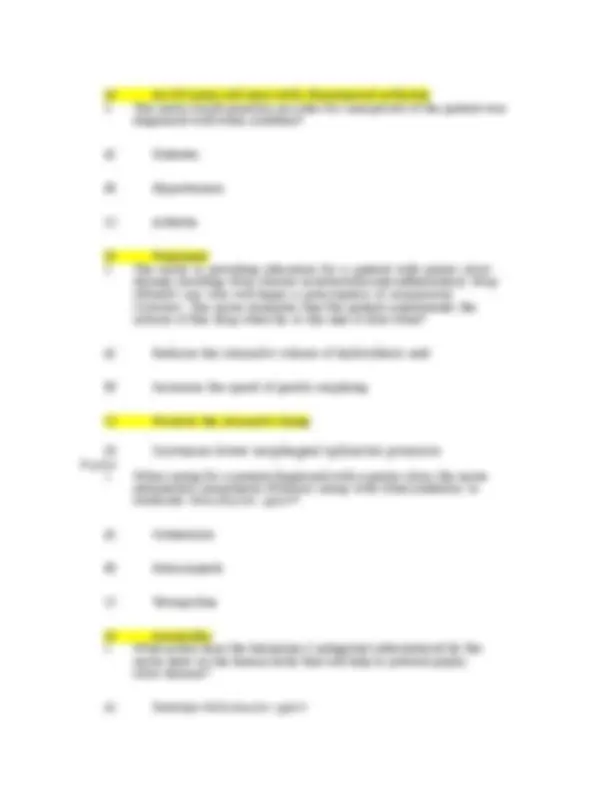
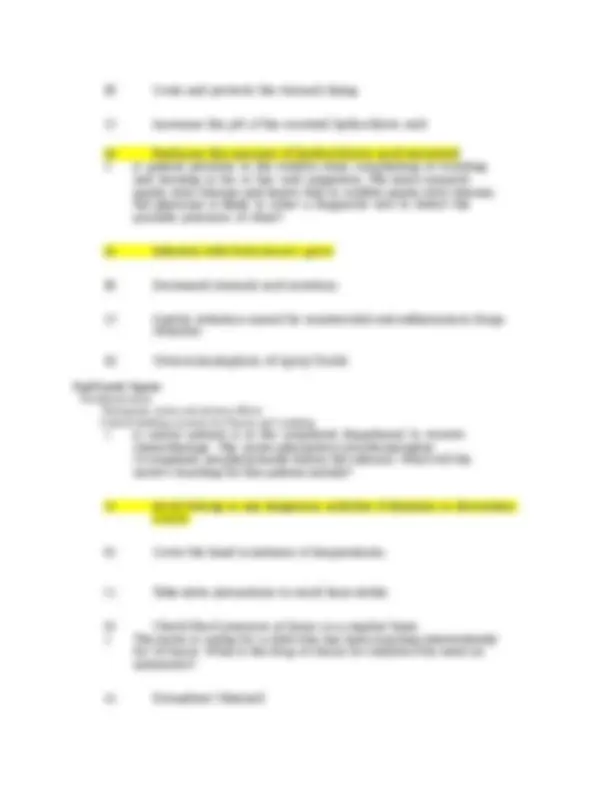
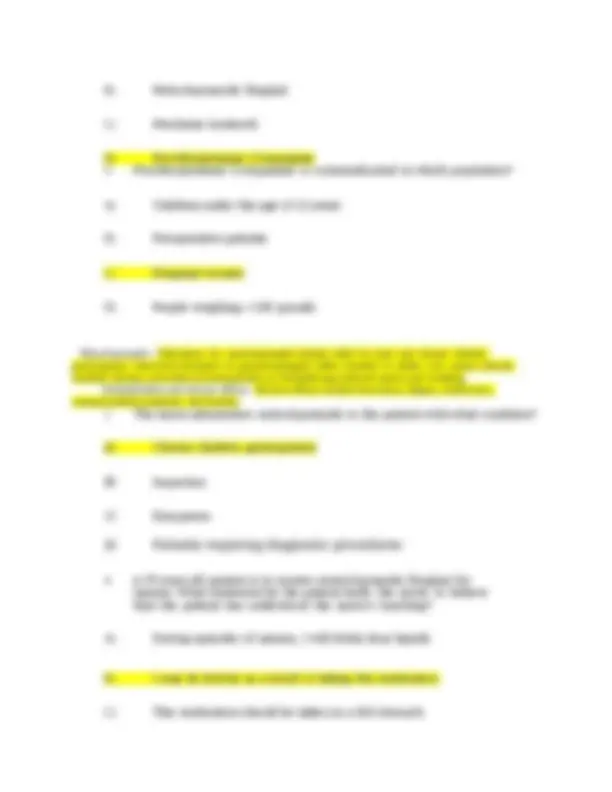
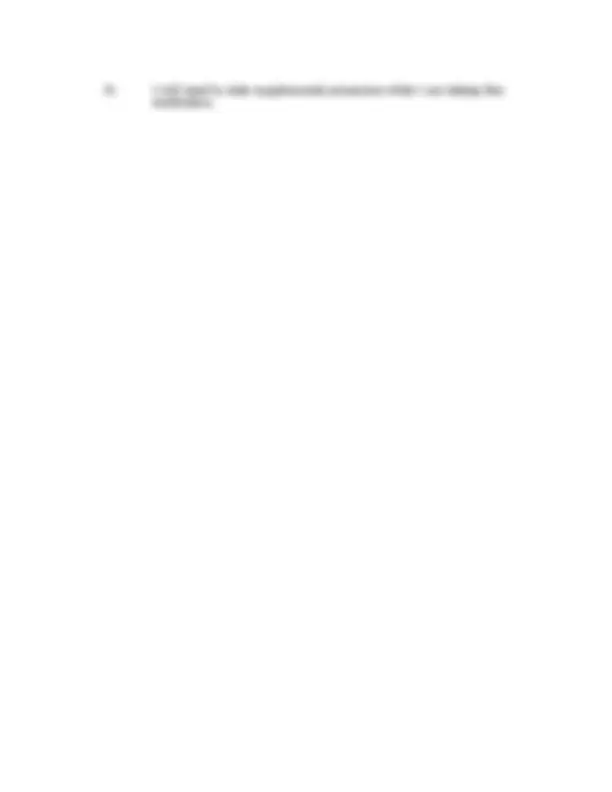


Study with the several resources on Docsity

Earn points by helping other students or get them with a premium plan


Prepare for your exams
Study with the several resources on Docsity

Earn points to download
Earn points by helping other students or get them with a premium plan
Community
Ask the community for help and clear up your study doubts
Discover the best universities in your country according to Docsity users
Free resources
Download our free guides on studying techniques, anxiety management strategies, and thesis advice from Docsity tutors
Pharmacology finals Drugs Affecting the Respiratory System Complete A+ Guide.
Typology: Assignments
1 / 53

This page cannot be seen from the preview
Don't miss anything!














































topical nasal decongestant. What instructions should be given? A) Avoid becoming pregnant during decongestant therapy. B) Increase fluids to 2 L/d. C) Restrict fluids to 500 mL/d. D) Take the medication with meals.
A) Mucosal ulcerations B) Decreased drainage C) Increased risk of infection D) Asthma
A) Polydipsia B) Tachycardia C) Hypotension D) Diarrhea
B) Most natural products are less toxic or more potent than traditional asthma medications. C) Natural products decrease the adverse effects associated with adrenergic bronchodilators. D) Delays in appropriate treatment can have serious, even fatal, consequences.
the accumulation of the drug in the kidney? A) Avoid caffeine intake. B) Increase fluids. C) Decrease activity. D) Increase consumption of fruits and vegetables.
D) You will need to come to the clinic and be evaluated by your physician to make sure the infection is really gone.
C) Increase your fluid intake. Drink lots of water. D) If you notice yellowing of your eyes or skin, contact your health care provider immediately.
D) Take the medication with 2 ounces of water.
C) There is no risk unless you come in contact with blood and body fluids. D) The patient should be isolated and have limited visitation.
D) Whipworms
A) Inhalation B) Contact with skin C) Ingestion of undercooked foods D) Blood-borne exposure
infections. What is the nurse’s best response? A) Wash hands before eating. B) Do not share hairbrushes or hats. C) Wash fresh fruits and vegetables before eating. D) Avoid heavily populated areas.